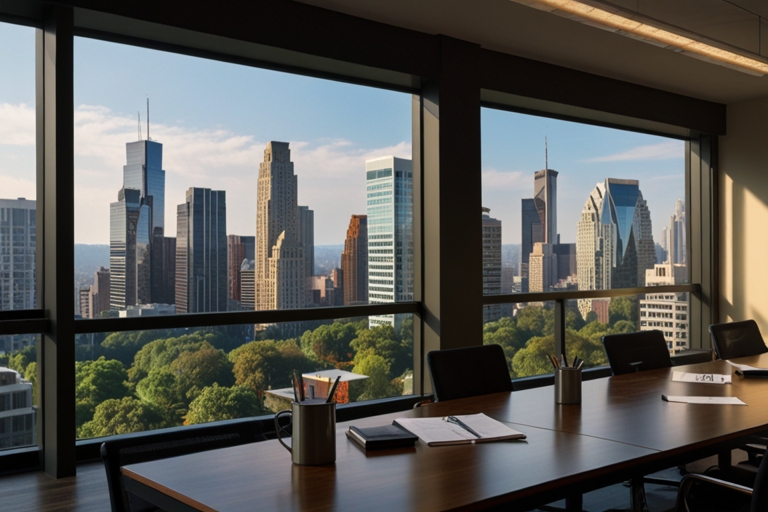Did You Know These 5 Things About Commercial Property Insurance?
Did You Know These 5 Things About Commercial Property Insurance?! Commercial property insurance is a critical element for any business owner. It safeguards businesses from financial losses due to various risks like fire, theft, and natural disasters. But there’s more to this insurance than meets the eye. Let’s explore five key aspects you may not know about commercial property insurance, which can be invaluable for making informed business decisions.
1. Commercial Property Insurance Covers More Than Just the Building
When people think of property insurance, they often think of just the physical structure. However, commercial property insurance can cover far more, including:
- Furniture and Equipment: All the furniture, machinery, and electronics are covered under most policies. This includes desks, computers, and office supplies that are vital for daily operations.
- Inventory and Supplies: If your business holds stock or other supplies, they’re often covered, providing protection in case of damages due to fire, theft, or other unforeseen events.
- Outdoor Property: Items like signage, fences, and landscaping may also be covered, depending on the policy.
Example: Imagine a bakery that holds expensive ovens, a stock of ingredients, and customer seating furniture. A robust commercial property insurance policy would protect these assets as well as the building itself, providing comprehensive coverage.
2. Natural Disasters May Require Additional Coverage
While commercial property insurance covers a range of damages, it may not always cover natural disasters like earthquakes, floods, or hurricanes automatically. In most cases, these types of events require separate endorsements or additional policies.
- Flood Insurance: Often excluded in standard policies, flood insurance can be crucial for businesses in flood-prone areas.
- Earthquake Insurance: Businesses located in seismic zones should consider adding earthquake coverage.
- Wind and Hail Insurance: Coastal or storm-prone areas might benefit from wind and hail insurance, as these incidents can lead to significant repair costs.
Did You Know?: FEMA estimates that one inch of floodwater can cause up to $25,000 in damages. For businesses, this can be devastating without proper insurance coverage.
3. Business Interruption Coverage Can Be a Lifesaver
One of the most valuable but lesser-known aspects of commercial property insurance is business interruption coverage. If a disaster forces your business to close temporarily, this coverage can provide the funds needed to stay afloat.
What Does Business Interruption Coverage Include?
- Lost Revenue: Reimburses the income lost during the closure period.
- Temporary Relocation Costs: Covers expenses if you need to operate from a temporary location.
- Fixed Expenses: Continues to pay ongoing costs like rent, utility bills, and payroll.
Example: If a fire damages a retail store, business interruption coverage could cover the lost revenue during the closure period, helping the business maintain financial stability.
4. Risk Assessment Can Influence Your Premiums
Insurance companies use risk assessments to calculate premiums, and commercial property insurance is no exception. Various factors can influence these assessments, including:
- Location: Properties in areas prone to natural disasters or high-crime neighborhoods typically have higher premiums.
- Building Condition: Older buildings or those with outdated systems, like electrical wiring, may face higher premiums due to increased risks.
- Security Measures: Businesses with enhanced security systems, fire alarms, and sprinklers often receive lower premiums because they’re deemed safer.
Pro Tip: Regularly upgrading safety systems and implementing risk management practices can help lower insurance costs over time.
5. Coinsurance Clauses May Affect Your Claim Payout
A coinsurance clause is a stipulation in many commercial property insurance policies that requires businesses to carry a certain amount of coverage relative to the property’s value. This clause can impact how much you receive in a claim.
How Does Coinsurance Work?
If your policy has an 80% coinsurance clause, you’re required to insure at least 80% of the property’s value. If the coverage falls short, the insurer may reduce the payout based on the percentage of under-insurance.
Example: If a building valued at $1 million has an 80% coinsurance requirement, you’d need to carry at least $800,000 in coverage. If you only have $600,000, the insurer may reduce the claim payout proportionally.
Key Takeaway: Be sure to understand any coinsurance clauses in your policy and insure your property to the required level to avoid reduced payouts.
Conclusion
Commercial property insurance offers vital protection for businesses, covering buildings, equipment, and more. By understanding key elements such as business interruption coverage, risk factors, and coinsurance, business owners can make informed decisions about their insurance needs and ensure comprehensive protection.
Call to Action
If you’re a business owner, don’t wait until disaster strikes. Consult with an insurance professional to review your commercial property insurance options, tailor a policy to your business needs, and secure your company’s future.


